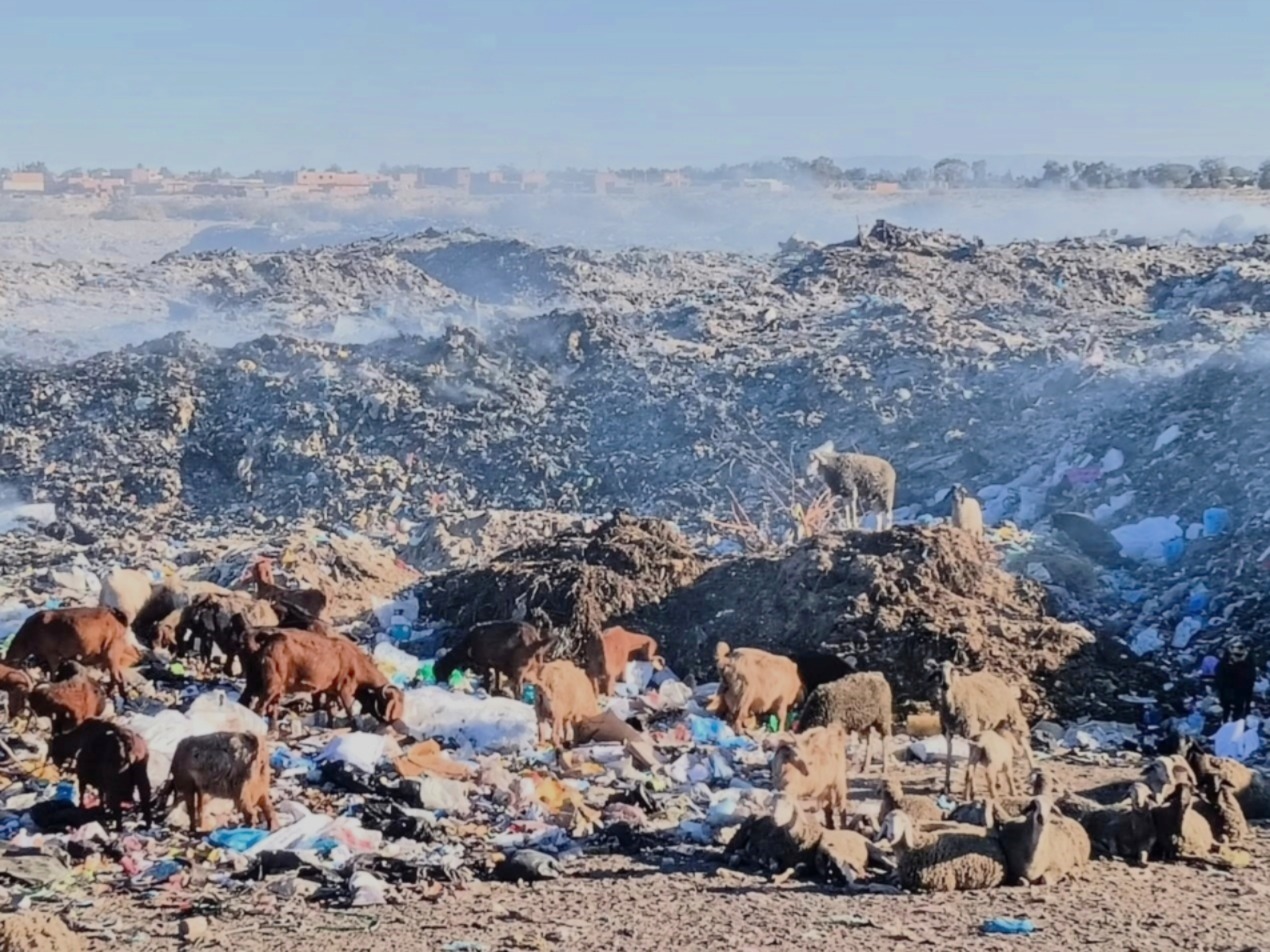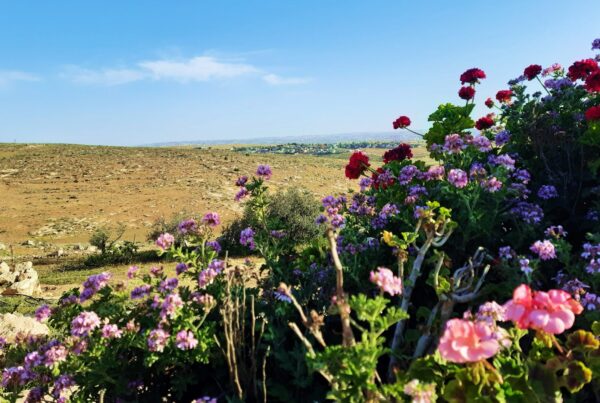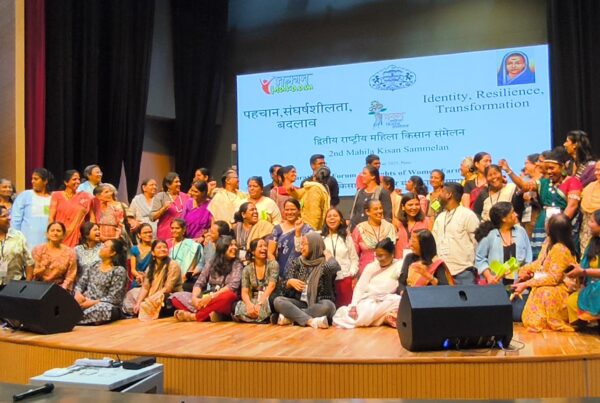Grazing in open-air landfills is a common practice in various parts of the world, especially for goats. Yet, this practice can have devastating consequences for both the health of the animals and the humans who consume their products. Driven by curiosity, I wanted to explore how this dynamic worked in intersection with environmental colonialism within the socio-ecological context where I found myself: at the edge of the Sahara Desert.
It’s the final stretch of our annual winter escape – the trip my boyfriend and I try to take every year to break free from the monotony of the coldest, most stressful season. Our rental car is carrying us north along the highway that slices through the country, winding through the pre-desert landscapes surrounding the city of Gafsa.
Suddenly, a flock of goats grazing among the dunes catches our attention – not because of the animals themselves, but because we slowly realize the sand of the dunes has been replaced by piles of waste. To make things worse, a sharp, nauseating smell begins creeping into the car, growing stronger by the minute. Driven by curiosity, we decide to pull over and walk towards the flock, determined to figure out what kind of bizarre place we’ve stumbled upon.
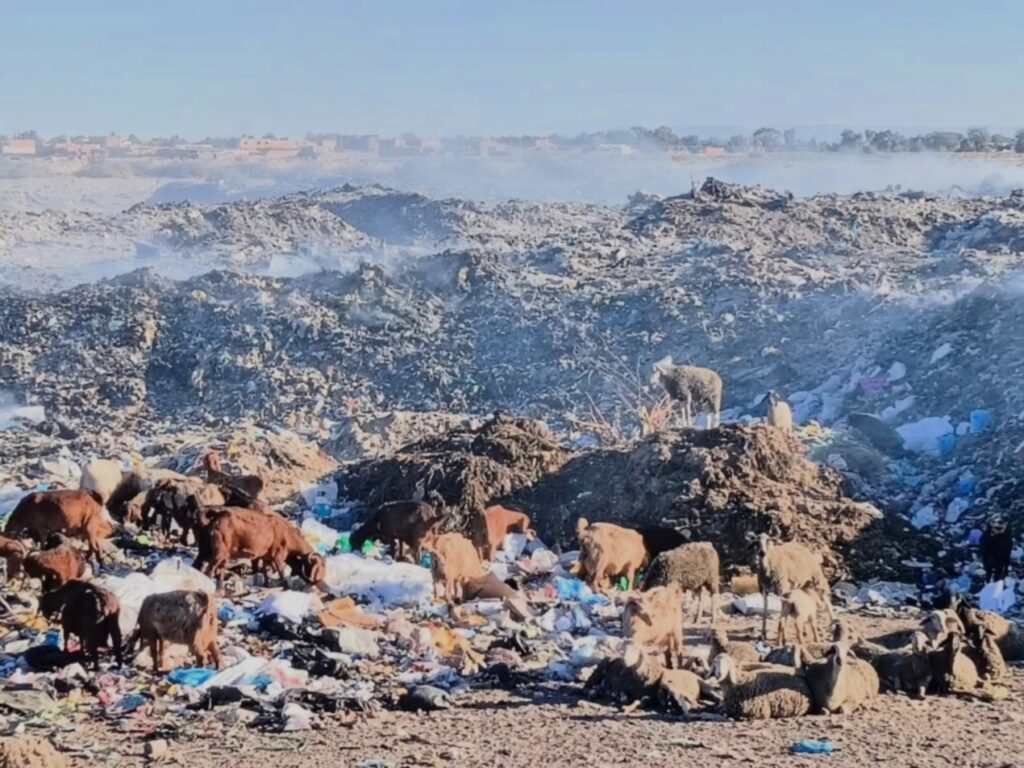
Columns of smoke rising from burning waste in Gafsa’s open-air landfill. Credits: Alexandra D’Angelo
«Don’t you have them in your country?» the shepherd asks, pointing to his goats, trying to grasp the reason behind our interest in his grazing.
«Yes, we have them in Italy too – he works with goats», I reply, pointing to my boyfriend. Only then does the shepherd seem to make sense of our unusual behaviour: “this white guy must be a shepherd too”, he probably thought. Whether it’s true or not doesn’t really make a difference. What seems important is that, between the two of them, they’ve found a common ground of knowledge and interest, making it easier to carry on a conversation full of brief words and plenty of gestures.
We are on the outskirts of Gasfa, a Tunisian city with 120,000 inhabitants and the capital of the eponymous governorate. Here, to greet anyone arriving from the southwestern regions of the country, there are around 35 hectares of waste, the equivalent of 50 football fields.
Columns of smoke rise from burning waste here and there, while herds of goats and sheep graze, hopping among plastic and metal debris between one dune and another.
«They find cellulose in the paper» the shepherd informs us. Cellulose, typically found in plants, is an essential element for the survival of goats and sheep. However, when vegetation is scarce, as in desert ecosystems, the animals are forced to seek it elsewhere. This is how cardboard packaging, canned goods, or piles of unused paper documents end up in the diet of Tunisian ruminants, not without repercussions on their health and, consequently, on the health of humans who consume their milk and meat.
A group of sheep chewing sheets of paper to ingest the cellulose essential for their diet. Credits: Alexandra D’Angelo
A High-Risk Diet
Paper may seem like an innocuous source of nutrition, but it rarely is. This is largely due to the industrial process used in its production, which involves numerous chemicals. Among them, chlorine and other bleaching agents are commonly used to achieve a white, uniform appearance, but their use can leave behind traces of toxic residues.
Additionally, paper discarded in landfills is often contaminated by a variety of potentially dangerous substances, including inks, glues, heavy metals, and other chemicals used during processing and printing. These can accumulate in the tissues of organisms that ingest them. Dioxins, polychlorinated biphenyls (PCBs), and heavy metals, in fact, are not eliminated from the body but instead progressively accumulate in fatty tissues, causing harmful effects both on animals and on those who consume their products.
In fact, the ingestion of waste can have devastating effects on animal health, extending well beyond immediate damage, as it can compromise the reproductive system, reducing fertility and hindering their ability to produce healthy offspring. In the long term, such alterations undermine the stability of populations, making it more difficult to maintain balanced and sustainable ecosystems.
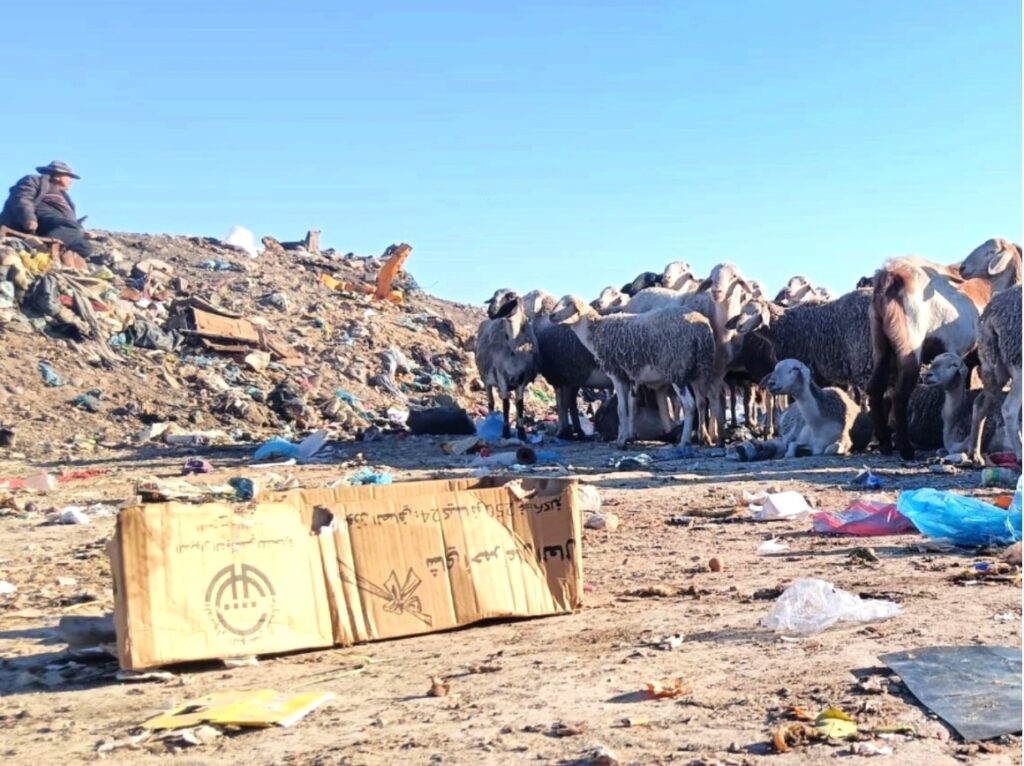
A shepherd crouching on piles of waste while his flock grazes. Credits: Giovanni Bailo.
Moreover, one of the main and most dangerous characteristics of dioxins is their persistence in the environment and their high ability to bioaccumulate along the food chain. This means that people who consume meat or dairy products from goats and sheep grazing in landfills may also accumulate these substances in their bodies. Dioxins are linked to a wide range of negative health effects, including hormonal disorders, immune system damage, reproductive problems, and an increased risk of cancer.
In addition to dioxins, landfills often contain heavy metals such as lead, mercury, cadmium, and arsenic, found in common items like batteries, electronic devices, paints, and pesticides. In this case too, these substances can accumulate in internal organs, bones, and tissues. Heavy metals are known for their toxic effects, including neurological damage, kidney problems, cardiovascular disorders, and, in some cases, teratogenic effects (i.e., harm to the foetus during pregnancy).
Among the potentially most dangerous contaminants are microplastic residues, which accumulate in landfills in significant quantities. These tiny fragments, once ingested, can cause severe inflammation in the gastrointestinal tract, impairing digestive function. Furthermore, microplastics act as carriers for other toxic substances, amplifying the health risks for exposed organisms, especially for the most vulnerable populations such as children, pregnant women, and the elderly. For instance, in the case of pregnant women, exposure to dioxins and heavy metals through the diet can have negative effects on fetal development, causing growth delays, cognitive issues, and other congenital malformations.
Waste and Phosphates: The two sides of Tunisian Environmental Colonialism
The issue of illegal landfills and, more broadly, the hazardous management of waste, is a pressing topic in Tunisia’s recent history, often sparking protests and mobilization led by the country’s environmental movements.
First and foremost, Tunisia has never implemented any recycling system.
Indeed, it has recently come to light that there has been an illicit trade between Tunisia and Italy surrounding the illegal disposal of waste. In 2020, a judicial investigation discovered the export of approximately 7,892 tons of unsorted municipal waste packed in 70 containers traveling from the southern-Italian region of Campania to the port of Soux, on the western Tunisian coast. These waste materials, falsely declared as recyclable, were destined for a company called Soreplast, which lacked the proper facilities for treatment.
As a result, the waste was either burned along roadsides or buried in the outskirts of cities—practices that are unfortunately common when waste disposal is controlled by organized crime, and which have severe consequences for the ecosystem and the health of local communities. On one hand, burning waste releases highly toxic substances into the air, including dioxins, furans, and polycyclic aromatic hydrocarbons (PAHs). On the other hand, burying waste in areas lacking adequate soil sealing systems can lead to soil and groundwater contamination through the liquids produced by waste piles (known as “leachate”).
The open-air landfill near Gasfa is just one of the countless examples scattered across the country.
However, the uniqueness of the region that stretches from the Gasfa mountains to the border with Algeria lies in its phosphate rocks, which have been targeted by mining companies for over a century to produce phosphate fertilizers, which are essential for global industrial agriculture.
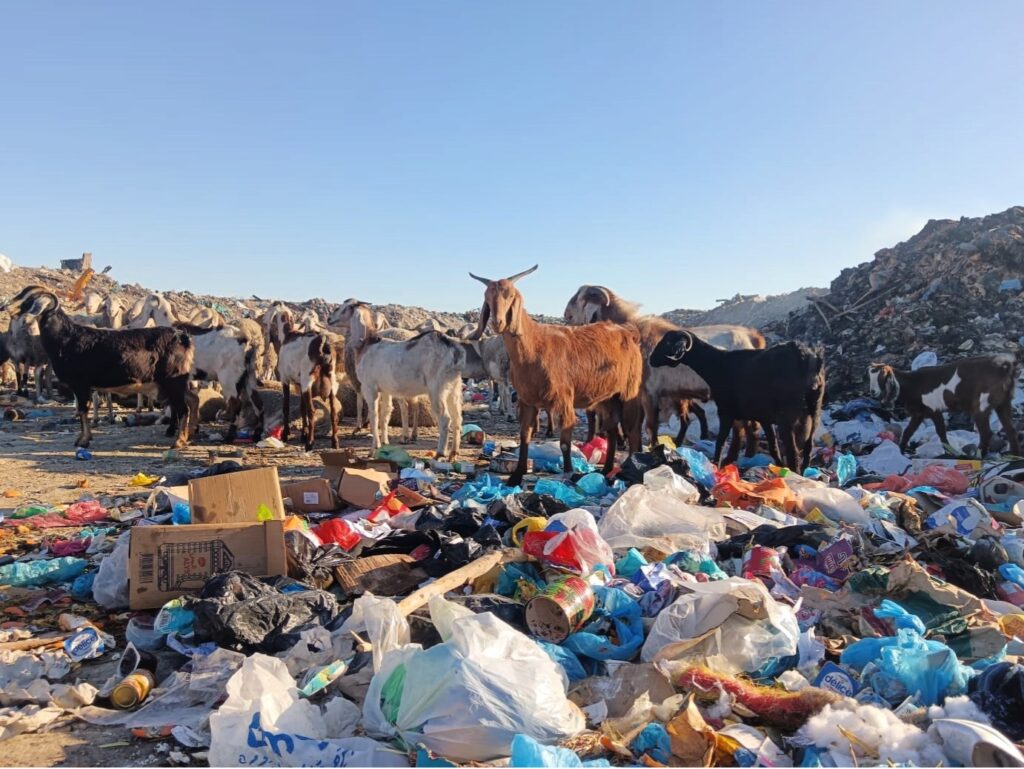
The ingestion of waste can have devastating effects on animal health. Credits: Giovanni Bailo
In fact, Gasfa’s phosphate leads the global market in terms of quality and purity. Since 2022, the Tunisian market has become even more competitive after phosphate prices skyrocketed with the onset of the Russia-Ukraine war, as both countries, along with Belarus, are among the world’s largest phosphate exporters.
Tunisia is now aiming to significantly increase its production and, consequently, its export to Western countries. This represents a potential massive economic gain for the country, but with minimal impact on the local economy of Gasfa, the region with the highest poverty rate in Tunisia – an imbalance that has been at the root of protests and mobilization in this mining basin since 2008.
Indeed, phosphate extraction does not create jobs but causes significant environmental damage and risks to human health. The mining process releases heavy metals like cadmium and arsenic, which contaminate the soil and groundwater, posing a serious threat to the health of ecosystems and nearby communities.
Waste and phosphates represent two sides of the same coin of relentless environmental colonialism – where external powers exploit and deplete local ecosystems for profit, while exporting wealth, importing disease, and perpetuating poverty.


